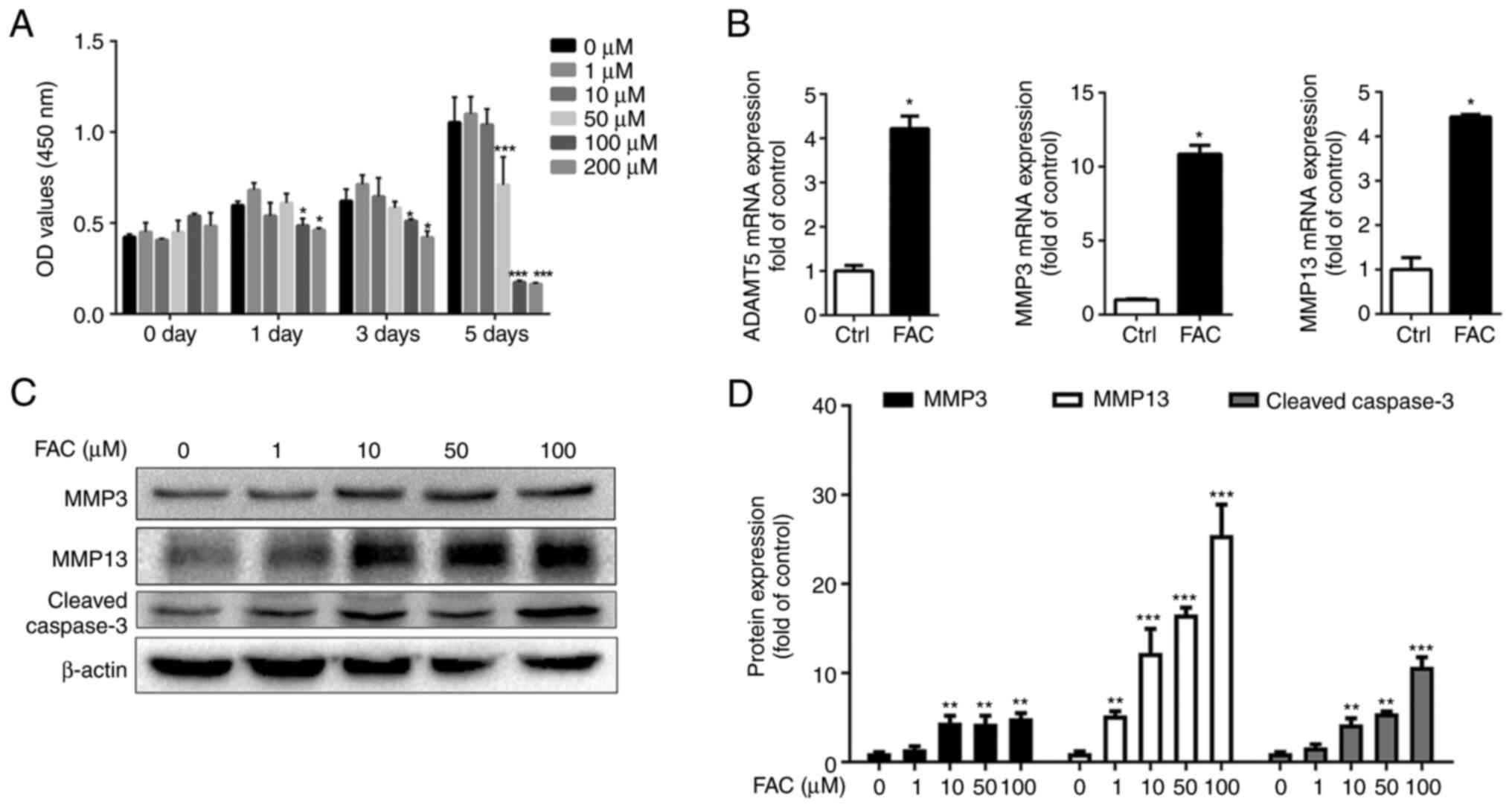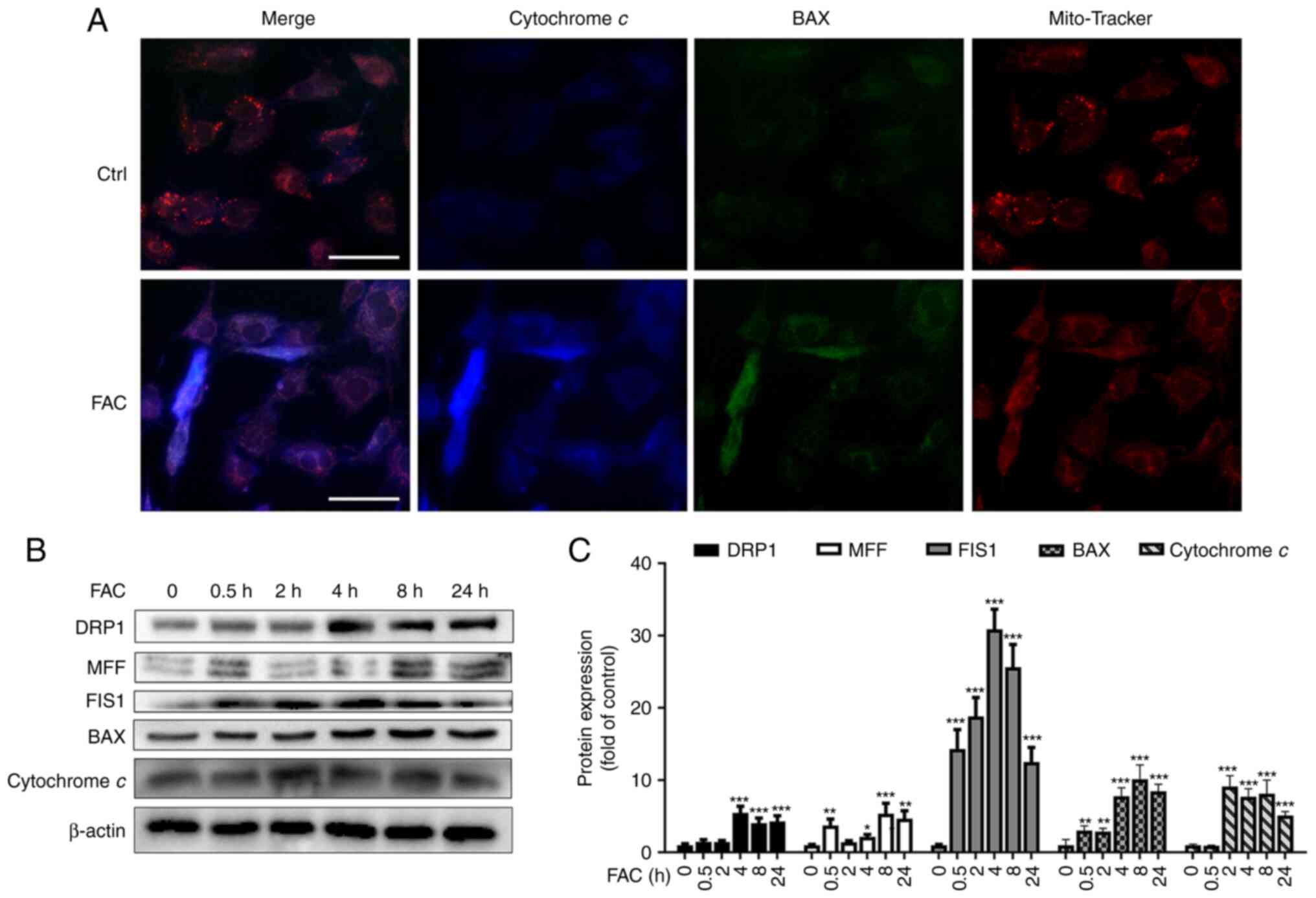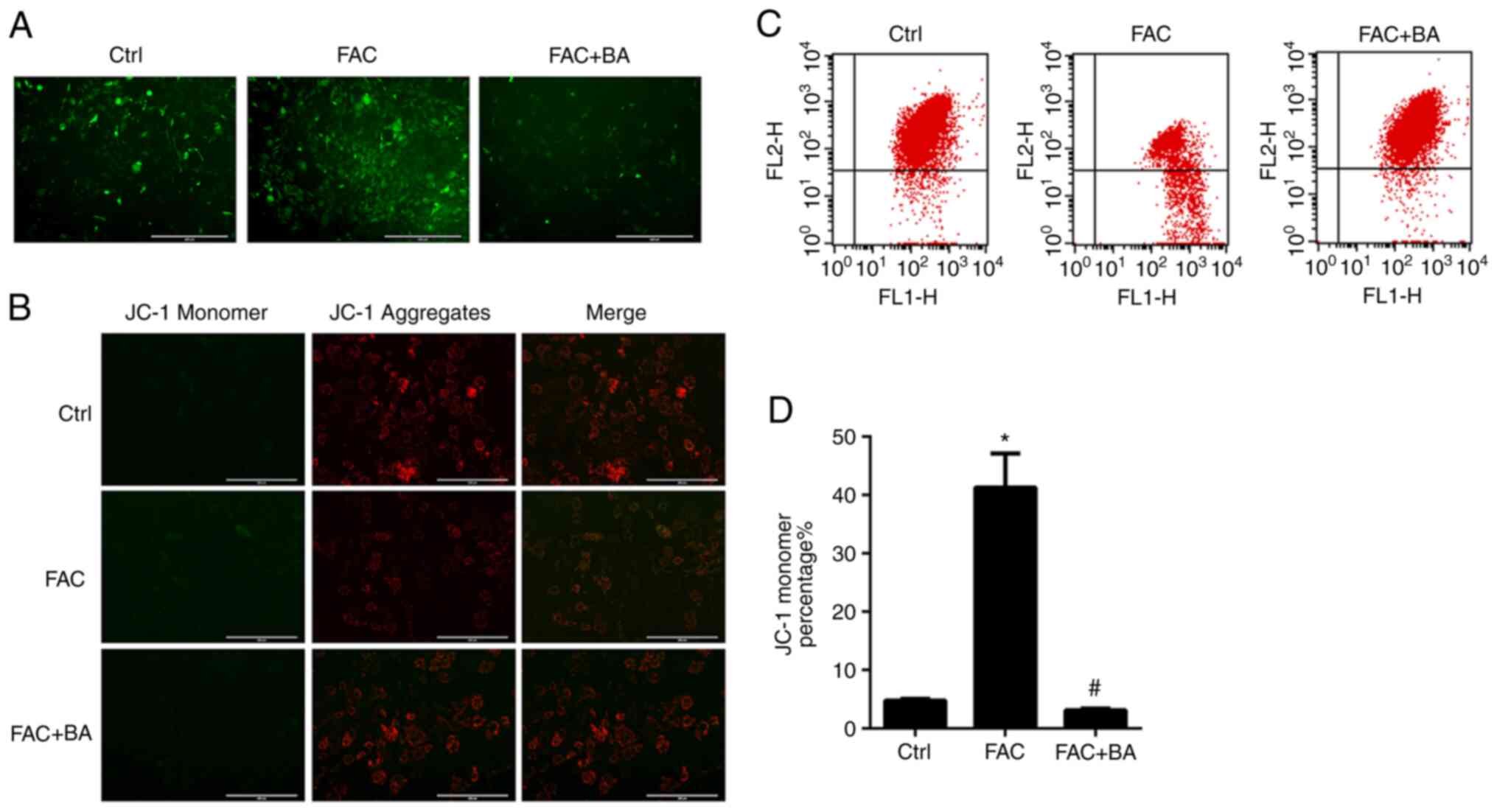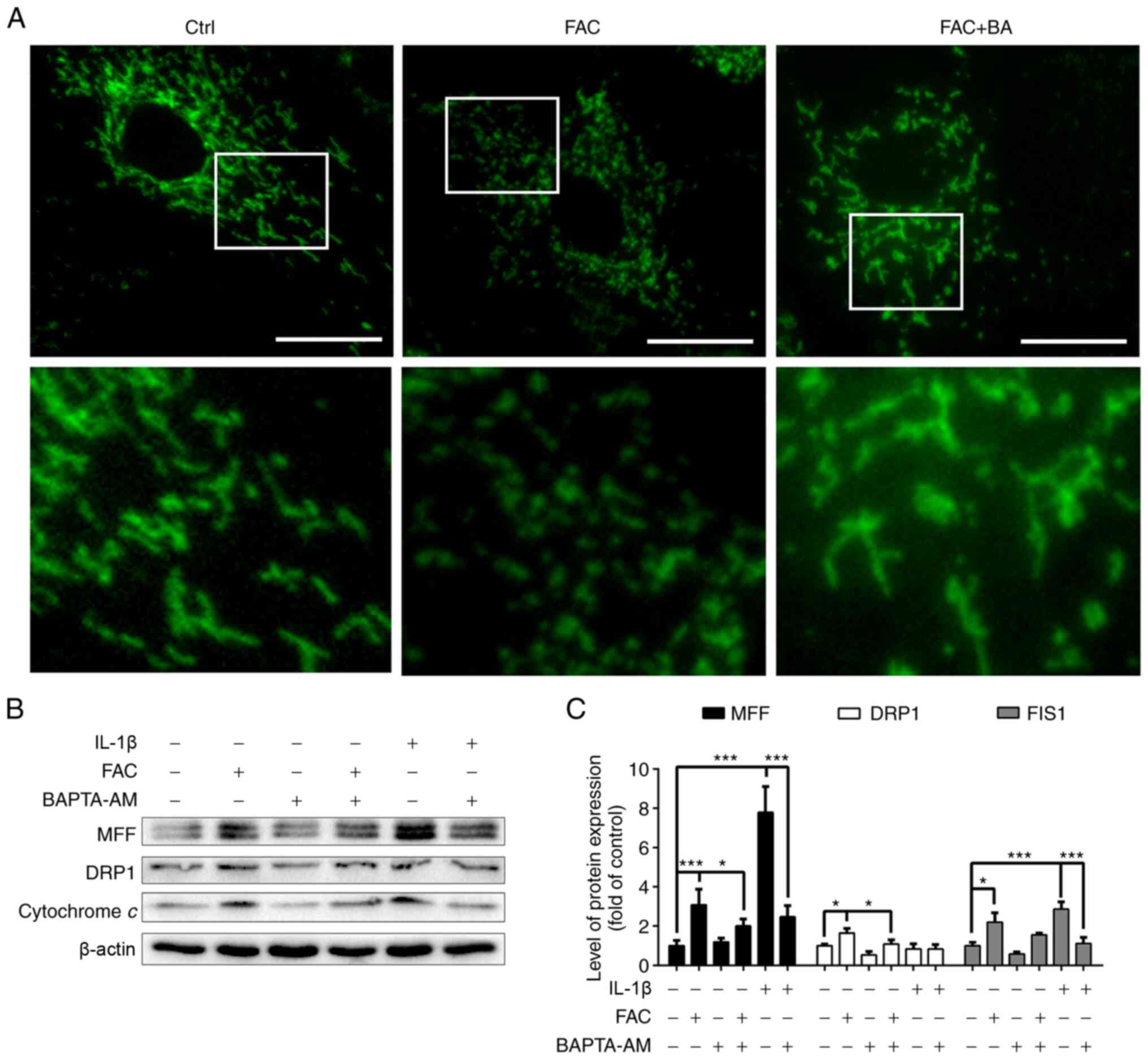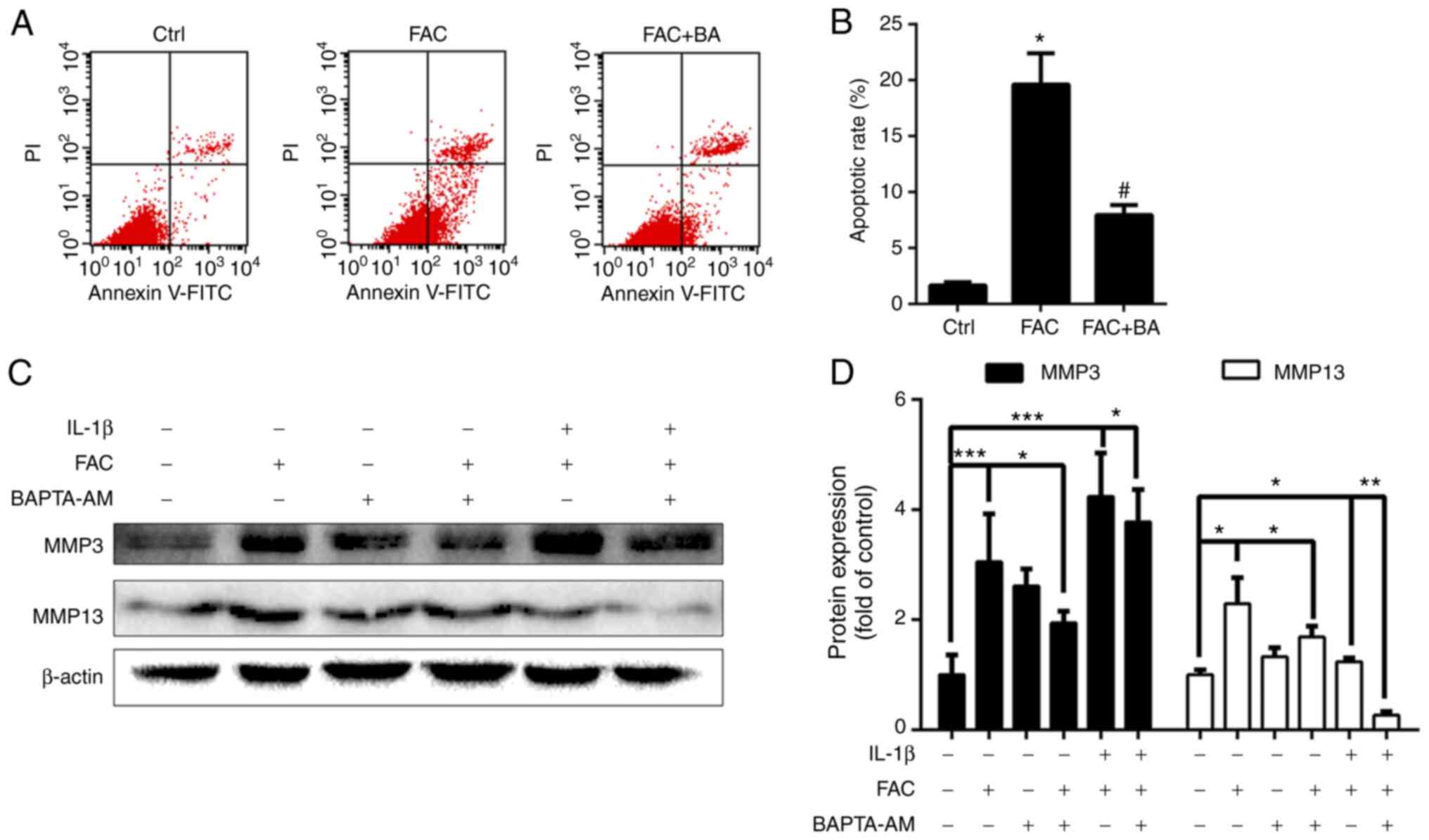|
1
|
Jing X, Du T, Li T, Yang X, Wang G, Liu X,
Jiang Z and Cui X: The detrimental effect of iron on OA
chondrocytes: Importance of pro-inflammatory cytokines induced iron
influx and oxidative stress. J Cell Mol Med. 25:5671–5680. 2021.
View Article : Google Scholar : PubMed/NCBI
|
|
2
|
Jing X, Lin J, Du T, Jiang Z, Li T, Wang
G, Liu X, Cui X and Sun K: Iron overload is associated with
accelerated progression of osteoarthritis: The role of DMT1
mediated iron homeostasis. Front Cell Dev Biol. 8:5945092020.
View Article : Google Scholar
|
|
3
|
Jeney V: Clinical impact and cellular
mechanisms of iron overload-associated bone loss. Front Pharmacol.
8:772017. View Article : Google Scholar : PubMed/NCBI
|
|
4
|
Sheth S: Iron chelation: An update. Curr
Opin Hematol. 21:179–185. 2014. View Article : Google Scholar : PubMed/NCBI
|
|
5
|
Gozzelino R and Arosio P: Iron homeostasis
in health and disease. Int J Mol Sci. 17:1302016. View Article : Google Scholar :
|
|
6
|
Leipuviene R and Theil E: The family of
iron responsive RNA structures regulated by changes in cellular
iron and oxygen. Cell Mol Life Sci. 64:2945–2955. 2007. View Article : Google Scholar : PubMed/NCBI
|
|
7
|
Xie Y, Hou W, Song X, Yu Y, Huang J, Sun
X, Kang R and Tang D: Ferroptosis: Process and function. Cell Death
Differe. 23:369–379. 2016. View Article : Google Scholar
|
|
8
|
Siddique A and Kowdley KV: Review article:
The iron overload syndromes. Aliment Pharmacol Ther. 35:876–893.
2012. View Article : Google Scholar : PubMed/NCBI
|
|
9
|
Ogilvie-Harris DJ and Fornaiser VL:
Synovial iron deposition in osteoarthritis and rheumatoid
arthritis. J Rheumatol. 7:30–36. 1980.PubMed/NCBI
|
|
10
|
Roosendaal G, Tekoppele JM, Vianen ME, van
den Berg HM, Lafeber FP and Bijlsma JW: Articular cartilage is more
susceptible to blood induced damage at young than at old age. J
Rheumatol. 27:1740–1744. 2000.PubMed/NCBI
|
|
11
|
Naughton DP: Iron(III)-mediated
intra-articular crystal deposition in arthritis: A therapeutic role
for iron chelators. Med Hypotheses. 57:120–122. 2001. View Article : Google Scholar : PubMed/NCBI
|
|
12
|
Nakamura T, Naguro I and Ichijo H: Iron
homeostasis and iron-regulated ROS in cell death, senescence and
human diseases. Biochim Biophys Acta. 1863:1398–1409. 2019.
View Article : Google Scholar
|
|
13
|
Kennish L, Attur M, Oh C, Krasnokutsky S,
Samuels J, Greenberg JD, Huang X and Abramson SB: Age-dependent
ferritin elevations and HFE C282Y mutation as risk factors for
symptomatic knee osteoarthritis in males: A longitudinal cohort
study. BMC Musculoskelet Disord. 15:82014. View Article : Google Scholar : PubMed/NCBI
|
|
14
|
Suantawee T, Tantavisut S, Adisakwattana
S, Tanavalee A, Yuktanandana P, Anomasiri W, Deepaisarnsakul B and
Honsawek S: Oxidative stress, vitamin e, and antioxidant capacity
in knee osteoarthritis. J Clin Diagn Res. 7:1855–1859.
2013.PubMed/NCBI
|
|
15
|
Blanco FJ, Rego I and Ruiz-Romero C: The
role of mitochondria in osteoarthritis. Nat Rev Rheumatol.
7:161–169. 2011. View Article : Google Scholar : PubMed/NCBI
|
|
16
|
Kühn LC: Iron regulatory proteins and
their role in controlling iron metabolism. Metallomics. 7:232–243.
2015. View Article : Google Scholar
|
|
17
|
Kumfu S, Chattipakorn SC, Fucharoen S and
Chattipakorn N: Dual T-type and L-type calcium channel blocker
exerts beneficial effects in attenuating cardiovascular dysfunction
in iron-overloaded thalassaemic mice. Exp Physiol. 101:521–539.
2016. View
Article : Google Scholar : PubMed/NCBI
|
|
18
|
Sripetchwandee J, KenKnight SB, Sanit J,
Chattipakorn S and Chattipakorn N: Blockade of mitochondrial
calcium uniporter prevents cardiac mitochondrial dysfunction caused
by iron overload. Acta Physiol (Oxf). 210:330–341. 2014. View Article : Google Scholar
|
|
19
|
Kumfu S, Khamseekaew J, Palee S,
Srichairatanakool S, Fucharoen S, Chattipakorn SC and Chattipakorn
N: Combined iron chelator and T-type calcium channel blocker exerts
greater efficacy on cardioprotection than monotherapy in
iron-overload thalassemic mice. Eur J Pharmacol. 822:43–50. 2018.
View Article : Google Scholar : PubMed/NCBI
|
|
20
|
Zhang Y, Zhao X, Chang Y, Zhang Y, Chu X,
Zhang X, Liu Z, Guo H, Wang N, Gao Y, et al: Calcium channel
blockers ameliorate iron overload-associated hepatic fibrosis by
altering iron transport and stellate cell apoptosis. Toxicol Appl
Pharmacol. 301:50–60. 2016. View Article : Google Scholar : PubMed/NCBI
|
|
21
|
Cui R, Choi SE, Kim TH, Lee HJ, Lee SJ,
Kang Y, Jeon JY, Kim HJ and Lee KW: Iron overload by transferrin
receptor protein 1 regulation plays an important role in
palmitate-induced insulin resistance in human skeletal muscle
cells. FASEB J. 12:fj201800448R2018.
|
|
22
|
Livak KJ and Schmittgen TD: Analysis of
relative gene expression data using real-time quantitative PCR and
the 2(-Delta Delta C(T)) method. Methods. 25:402–408. 2001.
View Article : Google Scholar
|
|
23
|
Meyer JN, Leuthner TC and Luz AL:
Mitochondrial fusion, fission, and mitochondrial toxicity.
Toxicology. 391:42–53. 2017. View Article : Google Scholar : PubMed/NCBI
|
|
24
|
Wang H, Liu C, Zhao Y and Gao G:
Mitochondria regulation in ferroptosis. Eur J Cell Biol.
99:1510582019. View Article : Google Scholar : PubMed/NCBI
|
|
25
|
Tilokani L, Nagashima S, Paupe V and
Prudent J: Mitochondrial dynamics: Overview of molecular
mechanisms. Essays Biochem. 62:341–360. 2018. View Article : Google Scholar : PubMed/NCBI
|
|
26
|
Jing X, Lin J, Du T, Jiang Z, Li T, Wang
G, Liu X, Cui X and Sun K: Iron overload is associated with
accelerated progression of osteoarthritis: The role of DMT1
mediated iron homeostasis. Front Cell Dev Biol. 8:5945092021.
View Article : Google Scholar : PubMed/NCBI
|
|
27
|
Chung JY, Kim HS and Song J: Iron
metabolism in diabetes-induced Alzheimer's disease: A focus on
insulin resistance in the brain. Biometals. 31:705–714. 2018.
View Article : Google Scholar : PubMed/NCBI
|
|
28
|
Gao M, Monian P, Pan Q, Zhang W, Xiang J
and Jiang X: Ferroptosis is an autophagic cell death process. Cell
Res. 26:1021–1032. 2016. View Article : Google Scholar : PubMed/NCBI
|
|
29
|
Nieuwenhuizen L, Schutgens RE, van Asbeck
BS, Wenting MJ, van Veghel K, Roosendaal G, Biesma DH and Lafeber
FP: Identification and expression of iron regulators in human
synovium: Evidence for upregulation in haemophilic arthropathy
compared to rheumatoid arthritis, osteoarthritis, and healthy
controls. Haemophilia. 19:e218–e227. 2013. View Article : Google Scholar : PubMed/NCBI
|
|
30
|
Camacho A, Simao M, Ea HK, Cohen-Solal M,
Richette P, Branco J and Cancela ML: Iron overload in a murine
model of hereditary hemochromatosis is associated with accelerated
progression of osteoarthritis under mechanical stress.
Osteoarthritis Cartilage. 24:494–502. 2016. View Article : Google Scholar
|
|
31
|
Gammella E, Buratti P, Cairo G and
Recalcati S: The transferrin receptor: The cellular iron gate.
Metallomics. 9:1367–1375. 2017. View Article : Google Scholar : PubMed/NCBI
|
|
32
|
Chen MP, Cabantchik ZI, Chan S, Chan GC
and Cheung YF: Iron overload and apoptosis of HL-1 cardiomyocytes:
Effects of calcium channel blockade. PLoS One. 9:e1129152014.
View Article : Google Scholar : PubMed/NCBI
|
|
33
|
Lopez de Figueroa P, Lotz MK, Blanco FJ
and Carames B: Autophagy activation and protection from
mitochondrial dysfunction in human chondrocytes. Arthritis
Rheumatol. 67:966–976. 2015. View Article : Google Scholar : PubMed/NCBI
|
|
34
|
Zhang Z, Xu T, Chen J, Shao Z, Wang K, Yan
Y, Wu C, Lin J, Wang H, Gao W, et al: Parkin-mediated mitophagy as
a potential therapeutic target for intervertebral disc
degeneration. Cell Death Dis. 9:9802018. View Article : Google Scholar : PubMed/NCBI
|
|
35
|
Tsuchiya M, Ichiseki T, Ueda S, Ueda Y,
Shimazaki M, Kaneuji A and Kawahara N: Mitochondrial stress and
redox failure in steroid-associated osteonecrosis. Int J Med Sci.
15:205–209. 2018. View Article : Google Scholar : PubMed/NCBI
|
|
36
|
Suwanjang W, Wu KL, Prachayasittikul S,
Chetsawang B and Charngkaew K: Mitochondrial dynamics impairment in
dexamethasone-treated neuronal cells. Neurochem Res. 44:1567–1581.
2019. View Article : Google Scholar : PubMed/NCBI
|
|
37
|
Anderson CP, Shen M, Eisenstein RS and
Leibold EA: Mammalian iron metabolism and its control by iron
regulatory proteins. Biochim Biophys Acta. 1823:1468–1483. 2012.
View Article : Google Scholar : PubMed/NCBI
|
|
38
|
Esposito G, Vos M, Vilain S, Swerts J,
Valadas JD, Van Meensel S, Schaap O and Verstreken P: Aconitase
causes iron toxicity in Drosophila pink1 mutants. PLoS Genet.
9:e10034782013. View Article : Google Scholar : PubMed/NCBI
|
|
39
|
Bresgen N and Eckl PM: Oxidative stress
and the homeodynamics of iron metabolism. Biomolecules. 5:808–847.
2015. View Article : Google Scholar : PubMed/NCBI
|















